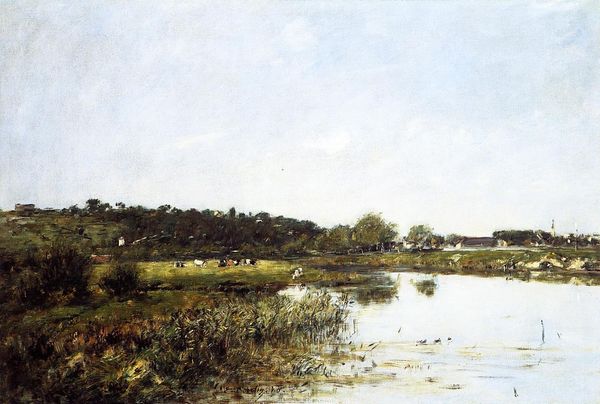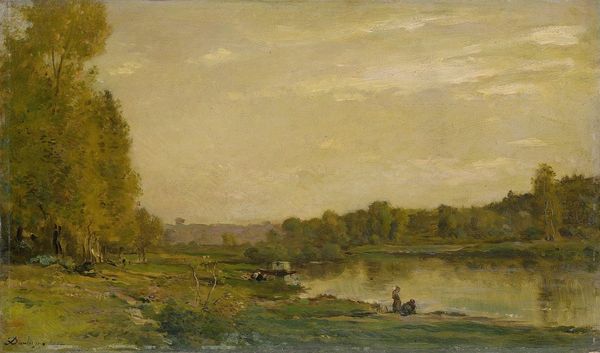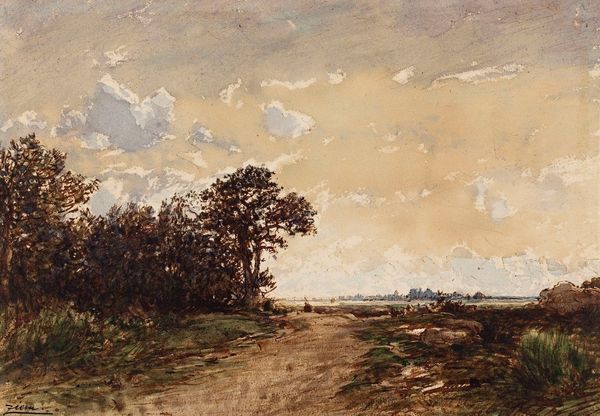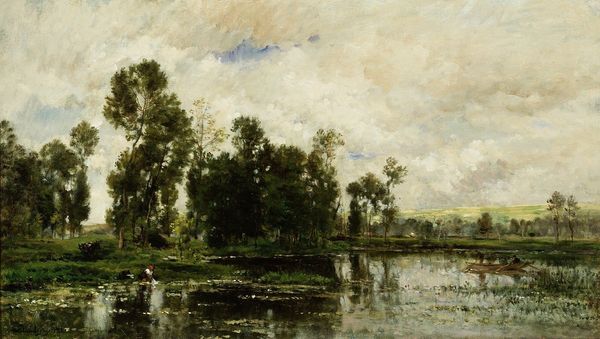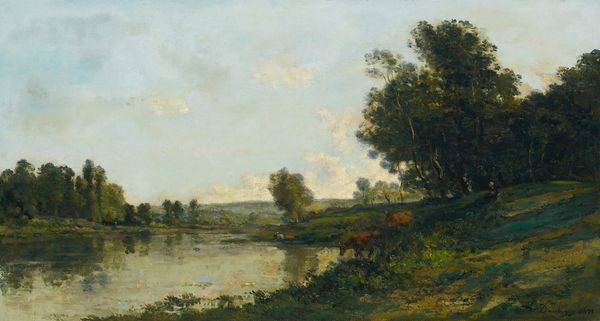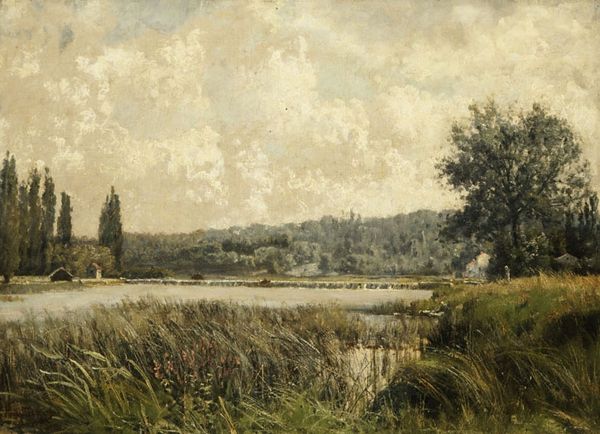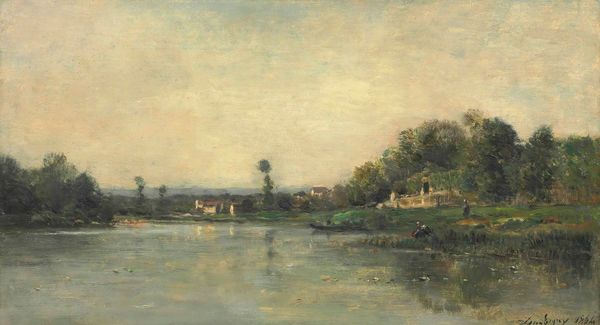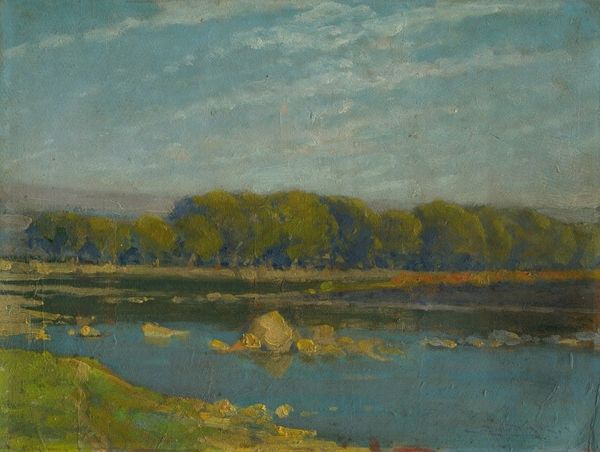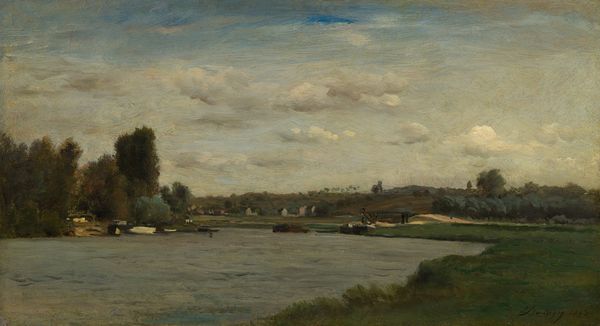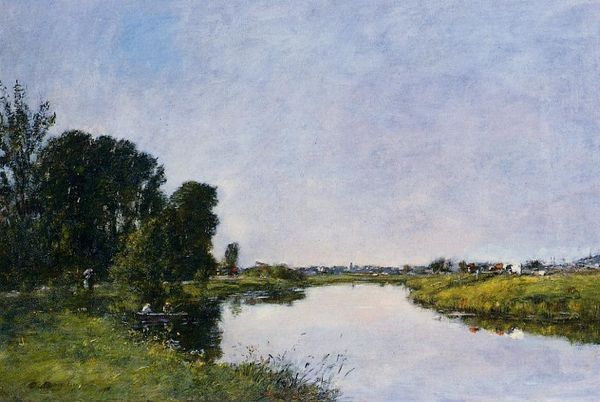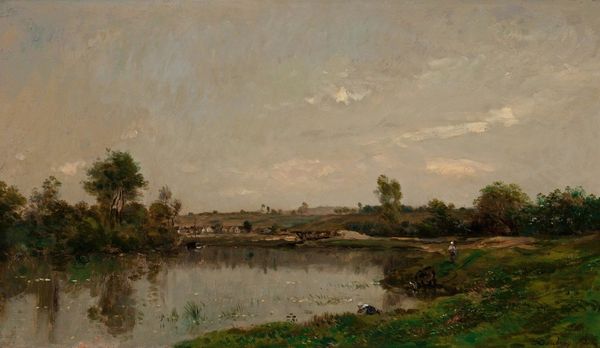
painting, plein-air, oil-paint
#
painting
#
impressionism
#
plein-air
#
oil-paint
#
landscape
#
oil painting
#
seascape
Copyright: Public Domain: Artvee
Editor: This is "Conflans," an oil painting by Charles-François Daubigny, from 1873. It has a very tranquil and reflective mood, almost melancholic, created with its muted palette. What do you see in this piece that might go beyond its immediate aesthetic appeal? Curator: This seemingly simple landscape reflects the social and political currents of its time. Daubigny painted this after the Franco-Prussian War. What emotions might that historical context evoke? The quiet river could represent a longing for peace and stability. The figure in the boat on the left could symbolize human resilience, adapting and navigating life after turmoil. Do you notice anything about the way the land and water seem to almost blend into one? Editor: Yes, there’s definitely a merging between the two, a sort of flattening of perspective. It almost makes the world seem precarious. Curator: Precisely! That blending could be interpreted as a visual metaphor for the blurred lines of social order following such upheaval. Think about how landscape painting often reflected ideologies of land ownership and national identity. In this light, what statement might Daubigny be making by downplaying those sharp delineations? Editor: I see what you mean. It disrupts a sense of established order and calls into question rigid social structures that lead to conflict. Curator: Exactly. And think about plein-air painting itself, going out of the studio, escaping traditional constraints... Editor: So, what appeared as a pretty waterscape is really a subtle call for social and political change. Curator: Perhaps Daubigny urges us to reflect upon our role in the world around us and question how we rebuild after destruction, both physically and ideologically. I've certainly seen Daubigny's work in a different light!
Comments
No comments
Be the first to comment and join the conversation on the ultimate creative platform.
